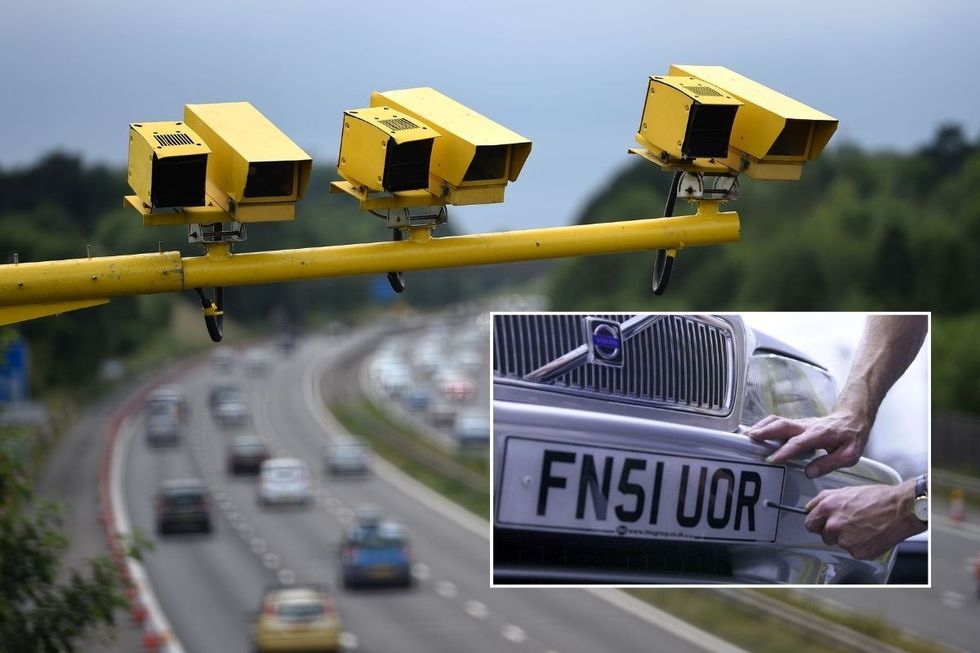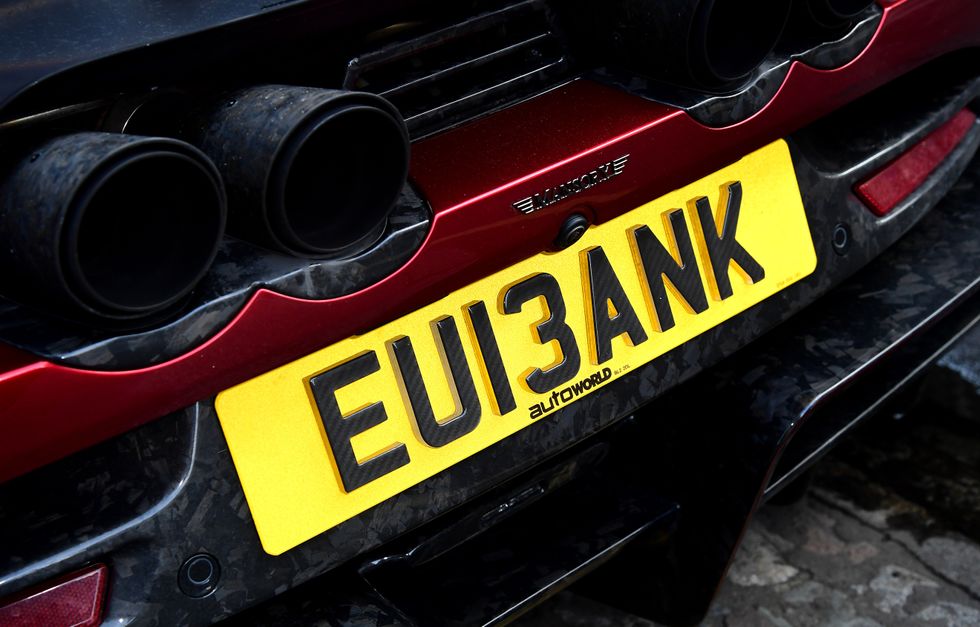Experts have issued an urgent warning about rogue drivers using “ghost plates” and other deceptive tactics to evade speed cameras and traffic enforcement across the UK.
Around one in 15 motorists are believed to be using anti-ANPR (Automatic Number Plate Recognition) technology to dodge fines and charges, according to recent estimates.
The concerning trend involves drivers fitting “invisible” licence plates to their vehicles, enabling them to elude detection from both speed and bus lane cameras.
These illicit methods allow motorists to avoid speeding penalties and low-emission zone charges, prompting increased scrutiny from police forces.
Do you have a story you’d like to share? Get in touch by emailing[email protected]

Drivers could face a £100 fine if they do not have a road-legal number plate
GETTY/PA
So-called “ghost plates”, also known as 3D or 4D number plates, are specifically designed to reflect light in ways that confuse camera detection systems.
The illegal plates work by incorporating reflective materials and special designs that make vehicle registrations difficult or impossible to capture by traditional enforcement cameras.
Drivers are employing various tactics, including the use of reflective tape to distort registration numbers and purchasing “stealth plates” from online vendors.
Former Biometrics and Surveillance Camera Commissioner Professor Fraser Sampson highlighted these issues in a resignation letter to former Transport Secretary Mark Harper, noting the widespread manipulation of number plates.
Wolverhampton City Council has taken a leading role in combating this issue, becoming the first local authority to invest in state-of-the-art technology designed to detect these illegal plates.
Council enforcement officers have been equipped with advanced cameras specifically developed to identify vehicles using deceptive number plates.
Councillor Craig Collingswood, cabinet member for environment and climate change, said: “Wolverhampton is leading the way as the first council investing in this state-of-the-art technology to deter and detect offenders.”
Drivers caught using illegal plates face £100 penalties, while taxi drivers licensed by Wolverhampton risk having their licences suspended or revoked.
Professor Sampson has raised serious concerns about fundamental vulnerabilities in the ANPR system’s design.
He warned: “For all its technological advancement and operational indispensability, the ANPR system still relies ultimately on a piece of plastic affixed to either end of a vehicle.”
The Professor described the ability to defeat the system as “staggeringly simple” at a time when reliance on ANPR for policing and traffic management is increasing daily.
The problem is compounded by what he calls a “wholly unregulated market” for number plates, making the system vulnerable to manipulation through stealth plates and cloned registration marks.
LATEST DEVELOPMENTS:
- Mercedes delivers first electric Popemobile as Pope Francis ditches petrol and diesel – ‘Special honour’
- HMRC rules impacting petrol, diesel and electric cars introduced this month may lead to ‘sticky situation’
- Millions of Britons could be at risk of huge fines as older drivers urged to ‘get regular eye tests’

Number plates with 3D and 4D lettering can sometimes pose issues to ANPR cameras
PA
Across the UK, around 15,400 traffic cameras monitor roads daily, generating between 75 and 80 million number plate reads. The current ANPR system operates with a 97 per cent accuracy rate, with around 2.4 million misread plates every day.
These figures occasionally exceed 80 million reads per day, with Professor Sampson warning this could increase to 100 million daily reads by the end of the year.
The system remains essential for public safety and efficient transport networks, with Professor Sampson noting: “Bus lanes are essential for the public transport network to operate efficiently and speed cameras help to keep the public safe from speeding vehicles.”